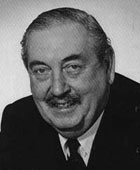Richard Gambier-Parry
| Richard Gambier-Parry | |
|---|---|
 |
|
| Born |
20 January 1894 Highnam Court, Highnam, Gloucestershire, England |
| Died | 19 June 1965 (aged 71) Abbots Close, Milton Keynes Village, Buckinghamshire, England |
| Allegiance |
|
| Service/branch |
|
| Rank | Brigadier |
| Service number | 9669 |
| Unit |
Royal Welsh Fusiliers 3rd Battalion Royal Flying Corps Royal Air Force Secret Intelligence Service |
| Commands held |
Director of Communications of the Secret Intelligence Service Director of Communications of the Foreign Office |
| Awards |
CMG (1945) KCMG (1956) |
| Relations |
Thomas Gambier-Parry Sir Charles Hubert Hastings Parry Major Ernest Gambier-Parry Major General Michael Denman Gambier-Parry |
Brigadier Sir Richard Gambier-Parry, KCMG (20 January 1894 – 19 June 1965) was a British military officer who served in both the army and the air force during World War I. He remained in military service post-war, but then entered into civilian life for more than a decade. In 1938, he was recruited by the head of the Secret Intelligence Service (also known as MI6). Gambier-Parry led the Communications Section (Section VIII) of the SIS during World War II, and assembled a clandestine wireless network that connected the United Kingdom with SIS agents in many countries, as well as helping to create the SIS resistance network in Britain. During the war, he was also recruited by the Director of British Naval Intelligence to serve as the radio consultant for Operation Tracer in Gibraltar. Post-war, he ran a network of secret listening stations.
Richard Gambier-Parry, son of architect Sidney Gambier-Parry (1859 – 1948) and his wife Grace née Denman, was born on 20 January 1894 at Highnam Court (pictured at left), Highnam, Gloucestershire, England. He was the grandson of artist, art collector, and philanthropist Thomas Gambier-Parry (1816 – 1888). Other notable relatives included his uncles, composer Sir Charles Hubert Hastings Parry (1848 – 1918) and Major Ernest Gambier-Parry (1853 – 1936). His brother was Major General Michael Denman Gambier-Parry (1891 – 1976).
Following Gambier-Parry's education at Eton College, he spent some time in the United States. With the onset of the First World War, he joined the Royal Welsh Fusiliers. He was appointed to the 3rd Battalion of the Royal Welsh Fusiliers on 9 August 1914, and was commissioned as Second Lieutenant (on probation) on 15 August 1914. He was promoted from 2nd Lieutenant to Lieutenant on 20 March 1916, which was later antedated to 3 March 1916. He served with distinction in France and Belgium and was wounded on three occasions. Also mentioned in despatches twice, Gambier-Parry then joined the Royal Flying Corps. On 29 August 1918, he was granted a temporary commission as Lieutenant in the Royal Air Force, with seniority from 1 April 1918. On 1 May 1919, the Lieutenant was appointed Staff Officer, 3rd Class. Effective 1 August 1919, he was re-seconded for two years as a Flying Officer in the Royal Air Force. Effective 1 August 1921, the Lieutenant in the Royal Welch Fusiliers was re-seconded as a Flight Lieutenant in the Royal Air Force for a period of two years. On 1 August 1925, the Captain in the Royal Welch Fusiliers relinquished his temporary commission as Flight Lieutenant upon return to Army duty.
...
Wikipedia
